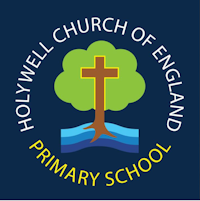Phonics and Early Reading
At Holywell, we teach daily phonics lessons in EYFS, Year 1 and to some pupils in KS2. We follow our own custom-made systematic synthetic phonics programme ( SSP) to ensure there is consistent coverage across all year groups to allow children to make good progress in reading and spelling.
Synthetic phonics is a way of teaching children how to read and write. Teaching children to blend the sounds of letters together helps them decode unfamiliar or unknown words by sounding them out. For example, when a child is taught the sounds for the letters s, a, t, I, p, n, they can start to build up the words: “tap”, “sit”, “pat”, “pan” and “sat” etc. Written language can be compared to a code, so knowing the sounds of individual letters and how those letters sound when they’re combined will help children decode words as they read. Understanding phonics will not only allow children to read but will also help them know which letters to use when they are writing words. Phonics involves matching the sounds of spoken English with individual letters or groups of letters. For example, the sound k can be spelled as c, k, ck or ch.
Phonics teaching starts in the EYFS where the children are introduced to each new sound (phoneme) and the letter/s (grapheme) which can be used to represent each sound (grapheme-phoneme correspondence (GPC). They are introduced to these sounds using an engaging picture book: for example, when learning the 'ar' digraph, the children do so by reading the book Shark in the Park by Nick Sharratt.
Children are taught phonics through discrete daily phonics sessions, and learning is reinforced in English lessons, foundation subjects and through both home and guided reading. Each week, the children take home a phonetically decodable book consistent with their current level of phonics attainment, which they read and re-read over the week to build up their reading fluency. Children also take home books from the class reading corner on a daily basis.
Phonics teaching continues into Year 1 and Year 2. In Year 1, the children sit the national phonics screening test to check their level of phonics acquisition in the Summer term. Children in Year 2 who need further phonics intervention continue their phonetic learning in a small adult supported group.
Once children have completed our phonics programme, they move onto spelling lessons using the Pathways to Spell scheme which starts in Year 2 and continues into Year 6.
